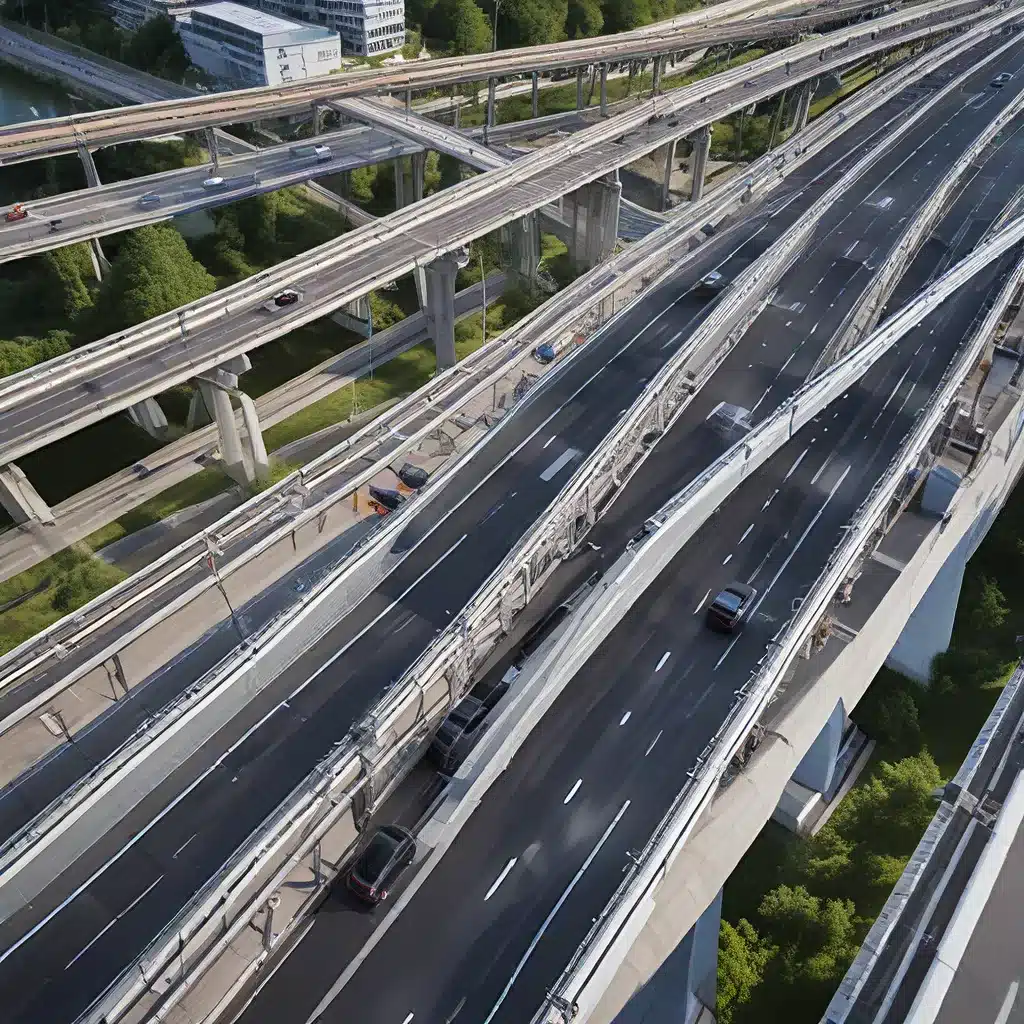
Unlocking the Potential of Sensor Networks in Smart Transportation
In the ever-evolving landscape of transportation infrastructure, the integration of sensor networks and digital twin technology has emerged as a game-changing approach to optimizing system performance and enhancing user experiences. By creating virtual representations of physical assets and processes, digital twins offer a powerful framework for gaining insights, predicting outcomes, and driving innovation across the transportation sector.
Sensor Networks: The Foundation of Intelligent Transportation
At the heart of this transformation lies the proliferation of sensor networks – interconnected arrays of devices that collect real-time data from the physical world. In the context of transportation, these sensors are strategically deployed throughout the infrastructure, monitoring everything from traffic patterns and vehicle movements to environmental conditions and infrastructure health.
The data collected by these sensor networks provides a comprehensive view of the transportation system, enabling transportation agencies and urban planners to make informed decisions. Sensor data can be used to optimize traffic flow, identify bottlenecks, and enhance emergency response – all crucial elements in maintaining efficient and reliable transportation networks.
Integrating Sensor Data with Digital Twins
To fully harness the potential of sensor networks, transportation organizations are increasingly turning to digital twin technology. A digital twin is a virtual representation of a physical asset or process, created using real-time data, simulation, and modeling techniques. In the transportation context, digital twins can be used to model entire transportation systems, including roads, bridges, vehicles, and even pedestrian movements.
By integrating sensor data with digital twin models, transportation managers can gain unprecedented insights into the performance and behavior of their infrastructure. Digital twins can simulate the impact of various scenarios, such as weather events, traffic incidents, or infrastructure changes, allowing transportation agencies to proactively optimize operations, mitigate risks, and improve decision-making.
Enabling Predictive Maintenance and Asset Management
One of the most significant advantages of integrating sensor networks with digital twins in transportation is the ability to predict and prevent infrastructure failures. Sensor data can be used to continuously monitor the condition of roads, bridges, and other critical assets, while the digital twin simulation models can identify potential issues and vulnerabilities before they manifest in the physical world.
This predictive maintenance approach allows transportation agencies to prioritize maintenance and repair activities, ensuring that limited resources are allocated effectively. Moreover, digital twins can be used to optimize asset management, helping transportation managers extend the lifespan of their infrastructure and reduce maintenance costs.
Enhancing Traffic Management and Mobility
Beyond infrastructure management, sensor-enabled digital twins can also revolutionize traffic management and mobility in transportation systems. By integrating data from various sources, such as traffic signals, vehicle sensors, and public transit systems, digital twins can simulate and predict traffic patterns, enabling transportation agencies to optimize signal timing, manage congestion, and improve multimodal connectivity.
Furthermore, digital twin models can be used to simulate the impact of new transportation initiatives, such as the introduction of autonomous vehicles, shared mobility services, or infrastructure changes. This allows transportation planners to test and evaluate these solutions in a virtual environment before making significant investments in the physical world.
Addressing Security and Privacy Concerns
As with any technology that relies on connected devices and data sharing, the integration of sensor networks and digital twins in transportation systems raises important security and privacy concerns. Transportation agencies must ensure that the sensor data and digital twin models are securely transmitted, stored, and accessed, protecting against cyber threats and safeguarding the privacy of citizens.
Robust security protocols, data encryption, and access control measures are crucial in mitigating these risks. Additionally, transportation organizations should collaborate with cybersecurity experts and policymakers to develop comprehensive governance frameworks that address the unique security and privacy challenges posed by sensor-enabled digital twins.
Powering the Future of Intelligent Transportation
The convergence of sensor networks and digital twins is poised to transform the future of transportation systems, empowering transportation agencies to optimize operations, enhance user experiences, and prepare for the challenges of tomorrow. By harnessing the power of these technologies, transportation leaders can bridge the gap between the physical and digital worlds, unlocking new possibilities for sustainable, efficient, and resilient transportation infrastructure.
As the sensor network and digital twin technologies continue to evolve, transportation organizations must stay vigilant, adapt to changing needs, and collaborate with industry partners to realize the full potential of this transformative approach. By embracing this digital transformation, the transportation sector can pave the way for smarter, safer, and more connected communities, benefiting both transportation providers and end-users alike.
Sensor-Networks.org is a valuable resource for professionals, researchers, and enthusiasts interested in exploring the latest advancements in sensor network technologies and their applications across various industries, including the transportation sector.